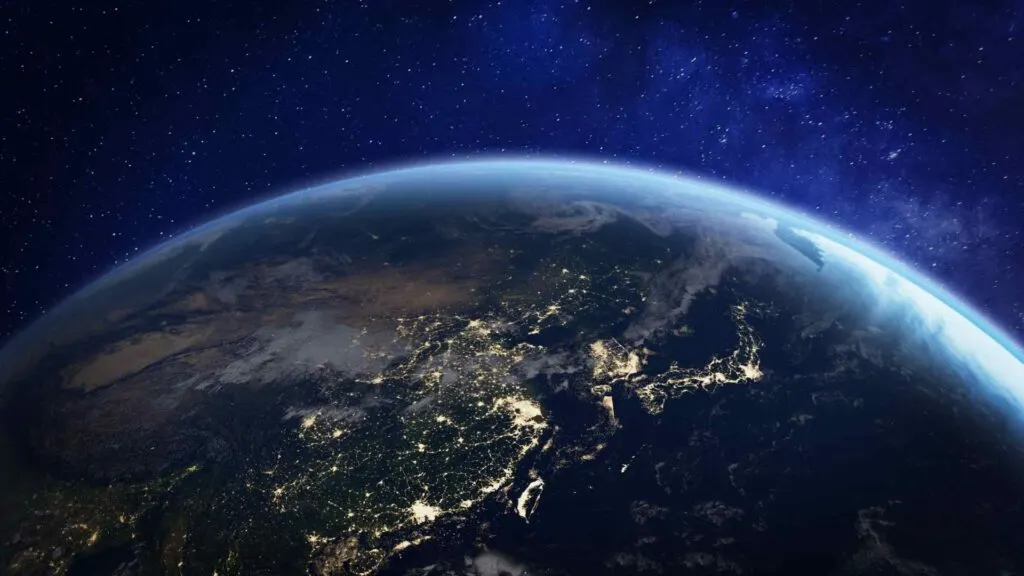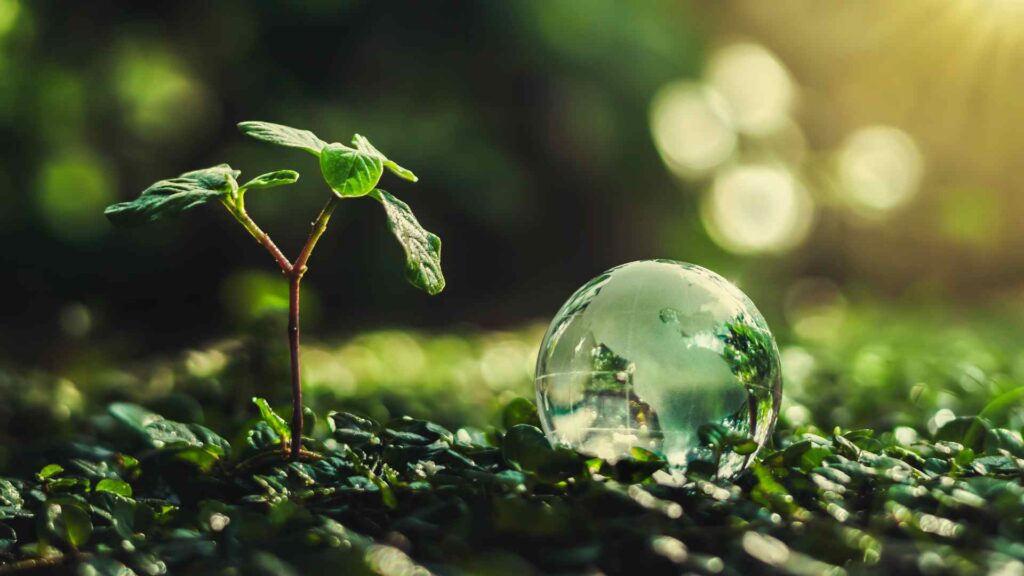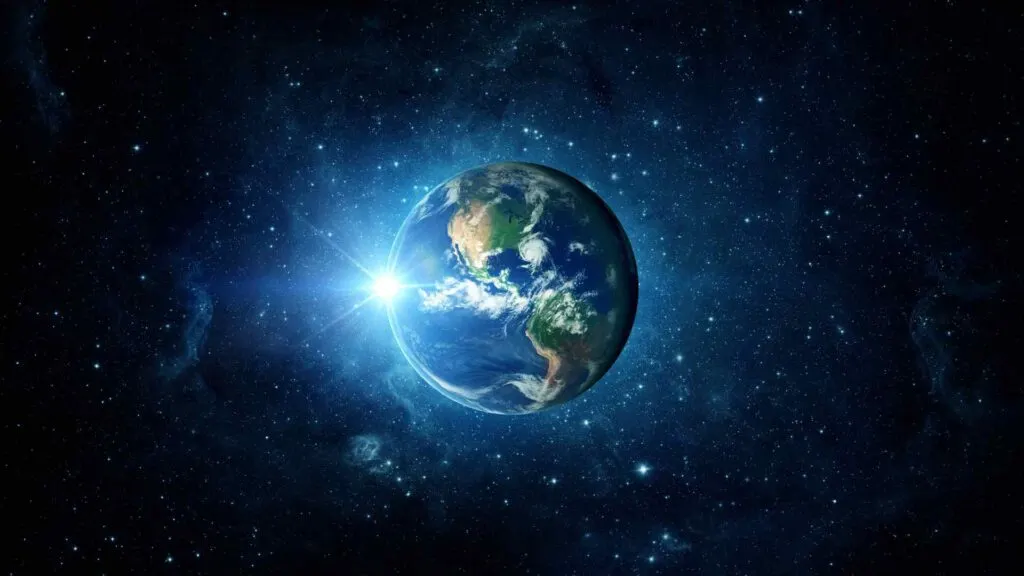Earth is a remarkable planet full of fascinating mysteries and wonders. From stunning natural formations to intriguing atmospheric phenomena, our home planet never ceases to amaze.
Dive into these fun facts about Earth and learn more about what makes it so unique. We’ve also included some earth-tastic puns for a laugh at the end!
Geology and Landforms
- Earth’s crust varies in thickness from about 5 to 70 kilometers, with thinner parts under oceans and thicker areas in mountainous regions.
- The oldest rocks on Earth are over 4 billion years old and are found in western Greenland, Canada, and Australia.
- Mount Everest grows by approximately 4 millimeters each year due to tectonic activity.
- The Mariana Trench, the deepest oceanic trench, reaches around 36,000 feet below sea level.
- Plate tectonics cause continents to move about 1-2 inches each year, making Earth’s surface ever-changing.
- The Grand Canyon in the United States was formed over millions of years due to erosion from the Colorado River.
- Africa’s Great Rift Valley is slowly pulling apart, and scientists believe it could eventually form a new ocean.
- Hawaii’s volcano, Mauna Kea, if measured from its base on the ocean floor, is taller than Mount Everest.
- There are over 1,500 potentially active volcanoes worldwide, mainly along tectonic plate boundaries.
- The Amazon rainforest is often called the “lungs of the Earth” because it produces about 20% of the world’s oxygen.
- The Appalachian Mountains are older than the Rocky Mountains and even older than the Atlantic Ocean.
- Around 75% of Earth’s landmass is covered by sedimentary rocks, formed by layers of deposited material.
- The Atacama Desert in Chile is the driest place on Earth, with some areas having no recorded rainfall.
- Iceland has some of the youngest rocks on Earth due to volcanic activity, which constantly forms new land.
- Earth’s magnetic field, generated by its molten iron core, protects us from harmful solar radiation.

Atmosphere and Climate
- Earth’s atmosphere is about 78% nitrogen, 21% oxygen, and traces of other gases, including argon and carbon dioxide.
- The ozone layer, which absorbs harmful UV radiation, is found in the stratosphere, about 10-30 miles above Earth.
- Every day, roughly 100 tons of meteoroids enter Earth’s atmosphere, most of which burn up before reaching the surface.
- The auroras (Northern and Southern Lights) are caused by solar particles interacting with Earth’s magnetic field.
- Earth’s atmosphere has five main layers: troposphere, stratosphere, mesosphere, thermosphere, and exosphere.
- The greenhouse effect helps trap warmth from the Sun, keeping Earth’s temperature stable for life to thrive.
- The Kármán line, at 100 kilometers above sea level, is commonly considered the boundary between Earth’s atmosphere and space.
- The hottest temperature recorded on Earth was 134°F in Death Valley, California, in 1913.
- The coldest natural temperature recorded was -128.6°F in Antarctica in 1983.
- Thunderstorms can produce severe weather phenomena like tornadoes, hail, and strong winds.
- A bolt of lightning is about five times hotter than the surface of the Sun.
- On average, about 100 lightning bolts strike Earth’s surface every second.
- Clouds are made up of tiny water droplets or ice crystals suspended in the atmosphere.
- Earth’s atmosphere bends light from the Sun, giving us colorful sunsets and the blue sky we see.
- The phenomenon known as the “Green Flash” occurs at sunset or sunrise when atmospheric conditions are just right.
Oceans and Water Bodies
- Earth’s surface is 71% water, with oceans holding around 97% of that water.
- The Pacific Ocean is the largest and deepest ocean, covering over 63 million square miles.
- Only about 5% of Earth’s oceans have been explored, leaving much of it a mystery.
- The Great Barrier Reef in Australia is the world’s largest coral reef system, spanning over 1,400 miles.
- Hydrothermal vents on the ocean floor support unique ecosystems fueled by chemical energy rather than sunlight.
- Around 20 million tons of gold are estimated to be dispersed in Earth’s oceans.
- Ocean tides are caused primarily by the gravitational pull of the Moon and, to a lesser extent, the Sun.
- Tsunamis can travel at speeds of up to 500 miles per hour in deep ocean waters.
- The Atlantic Ocean is growing wider by about an inch each year due to tectonic plate movement.
- More than 50% of Earth’s oxygen is produced by phytoplankton in the ocean.
- The saltiest body of water on Earth is the Don Juan Pond in Antarctica, which remains liquid even at -58°F.
- Earth has five named oceans: the Pacific, Atlantic, Indian, Southern, and Arctic Oceans.
- About 95% of Earth’s water is in the oceans, while only 2.5% is freshwater.
- The Sargasso Sea is a region in the Atlantic Ocean surrounded by currents rather than land.
- There are underwater waterfalls, like the Denmark Strait cataract between Greenland and Iceland, caused by different water temperatures and densities.

Flora and Fauna
- Earth’s rainforests are home to about 50% of all known plant and animal species.
- Coral reefs occupy less than 1% of the ocean floor but support over 25% of marine species.
- The Blue Whale is the largest animal on Earth, reaching lengths of up to 100 feet.
- There are over 391,000 species of plants, with more than 94% producing flowers.
- Earth has experienced five mass extinction events, with the last one wiping out the dinosaurs.
- Biodiversity hotspots, like the Amazon rainforest, have a high concentration of unique species.
- Ants are one of the most numerous animal groups, with over 12,000 species identified.
- Earth’s biodiversity provides invaluable ecosystem services, from pollination to oxygen production.
- Some plants, like seagrasses, grow underwater and are vital for oceanic ecosystems.
- Tardigrades, tiny water-dwelling animals, can survive extreme conditions and even the vacuum of space.
- There are around 900 species of bats, making them the second most diverse order of mammals.
- The venom of some animals, like the cone snail, can be up to 1,000 times more potent than morphine.
- Polar bears have black skin under their fur to better absorb sunlight and stay warm.
- Mushrooms, though often overlooked, are crucial for decomposing organic matter and recycling nutrients.
- Earth’s biomass is dominated by plants, which account for about 80% of all living matter.
Earth and Space
- Earth is about 93 million miles from the Sun, making it the third planet in our solar system.
- It takes Earth approximately 365.25 days to orbit the Sun, which is why we have a leap year every four years.
- Earth’s axis is tilted at 23.5 degrees, which gives us our changing seasons.
- Earth and Venus are often called “sister planets” due to their similar size, mass, and density.
- Earth is the only known planet with liquid water on its surface, a key ingredient for life.
- The Moon is about one-quarter the size of Earth and influences our planet’s tides.
- Earth’s rotation is gradually slowing down due to tidal friction caused by the Moon.
- About 4.5 billion years old, Earth formed from dust and gas surrounding the young Sun.
- Earth’s gravitational pull is strong enough to hold an atmosphere but weaker than larger planets.
- The term “Blue Planet” is derived from Earth’s appearance from space, largely due to its oceans.
- Earth is located in the Milky Way galaxy, which contains billions of other stars and solar systems.
- The Sun will eventually expand into a red giant, potentially engulfing Earth in billions of years.
- Earth’s magnetic field protects us from harmful solar winds and cosmic radiation.
- Our planet has been hit by many asteroids over its history, which have shaped its surface.
- Earth has five main climate zones: tropical, dry, temperate, continental, and polar.

Human Impact and Environmental Changes
- Humans have altered nearly 75% of Earth’s land surface, primarily for agriculture and development.
- Since the 1800s, global temperatures have risen by about 1°C, primarily due to human activities.
- Pollution from microplastics has been found in some of Earth’s most remote places.
- Deforestation contributes to biodiversity loss, climate change, and soil erosion.
- The hole in the ozone layer was largely caused by chlorofluorocarbons (CFCs) and has been shrinking since efforts to phase out these chemicals.
- Acid rain is caused by sulfur dioxide and nitrogen oxides from industrial emissions.
- Coral bleaching is a stress response that happens when corals lose their symbiotic algae, often due to rising sea temperatures.
- Overfishing threatens marine ecosystems and the livelihoods of millions who depend on fishing.
- Desertification affects millions of hectares annually, turning fertile land into deserts.
- Urban heat islands occur when cities trap heat, making them warmer than surrounding rural areas.
- Rising sea levels due to melting ice caps pose a threat to coastal regions worldwide.
- Around 8 million tons of plastic waste end up in oceans every year, harming marine life.
- Climate change is affecting the migration patterns of many species.
- Many plant and animal species are at risk of extinction due to habitat loss.
- Humans have left a significant footprint on Earth, visible even from space through light pollution.
Bonus: Earth Puns
- Why did the tectonic plate break up? It felt the pressure!
- Rocks rock!
- Life on Earth just keeps getting better.
- I’m always down to Earth.
- Let’s rock and roll through these facts!
- I’m feeling grounded today.
- Earth jokes are solid!
- Things are heating up on Earth!
- It’s a shore thing with the oceans.
- Have an “earthy” day!
- The mountains have “peak” appeal!
- Earth is “out of this world” (but not really).
- Keep your “core” in check!
- Planet Earth is “magnetic.”
- It’s an “atmo-spheric” party!
- Climate change? Don’t “ice-solate” the issue.
- These puns are so “polarizing.”
- Earth without art is just “eh.”
- Stay “rooted” to the ground!
- Earth’s crust? It’s on a roll!
- We’re “orbiting” with joy.
- Don’t take Earth for granite!
- These puns are “groundbreaking.”
- Leaf it to Earth to make you smile.
- Geology rocks… really!
- Water you think of Earth?
- “Core” blimey!
- Earth is wheely cool!
- Nature calls… better answer!
- Seize the clay!
- Rock on!
- Grounded vibes only.
- It’s a whole “lava” love.
- Oceans? Totally deep.
- Keep calm and soil on.
- It’s never too “tide” for Earth.
- I’ve got an “earth-errific” view!
- So much “earth-ducation” here!
- You make my world go ’round!
- Always a “crater” joy.
- Earth, wind, and fire vibes!
- Don’t desert me!
- On solid ground here.
- There’s no “planet B.”
- Down-to-earth humor rocks!
- Time to “soil” it up!
- You’re the “rock” to my roll.
- Have an “earth-shaking” day!
- This planet is solid gold.
- Dig deep, it’s worth it.
